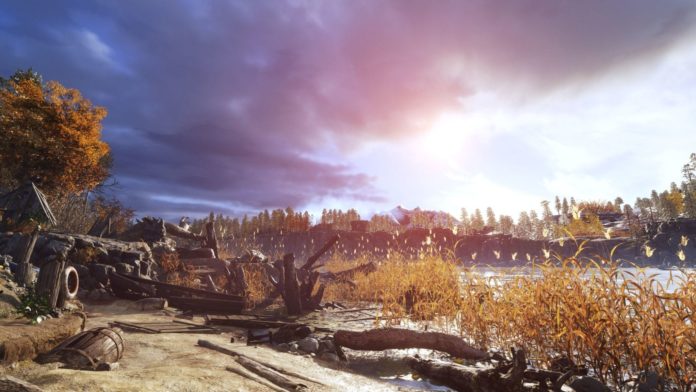Yesterday, we published the performance review of the PC version of Metro Exodus and although the benchmarking tool made it quite easy to analyze and compare the game’s performance at different settings, using various GPU/CPU combos, a bug prevented us from testing the much anticipated DLSS and raytracing performance. In this post, we are going to explore the RTX or raytracing performance of the NVIDIA GeForce RTX 2080 in Metro Exodus as well as the impact of DLSS on both the

The raytracing setting dramatically improves the global illumination, lighting and ambient occlusion in 4A’s latest Metro title. Exodus also features a slew of NVIDIA Gameworks effects including
Intel Core i9-9900KFC CPU Listed: For them Chicken Dinners
NVIDIA: Ray Tracing Will Be Added to every single upcoming game; Unity Engine Support Coming Soon
In case you didn’t know, DLSS is implemented using the new Tensor Cores that the Turing cards sport (in addition to the RTCores). It uses AI and NVIDIA’s supercomputers to reconstruct the image at a higher quality by comparing super-sampled images with aliased ones. The neural network algorithm then develops an algorithm to create smoother, higher-resolution versions of the game which is then exported and leveraged using the Tensor cores.
Testbench
- CPU: Intel i7-7700
- GPU: NVIDIA GeForce RTX 2080
- Memory: Kingston HyperX DDR4 16 GB RAM @ 2400MHz
- HDD: WD Black 4TB
Metro Exodus: NVIDIA RTX Raytracing Performance
| Settings | Ext | Ext DLSS | RTX High | RTX High+DLSS | RTX Ultra+DLSS | RTX Ultra |
| 1080p | 58 | – | 62 | – | – | 57 |
| 1440p | 48 | – | 46 | 54 | 51 | 41 |
| 2160p | 33 | 40 | 26 | 38 | 35 | – |
Two things are clear right off the bat. Firstly, don’t enable
AMD Thinks NVIDIA DLSS is not Good Enough; Calls TAA & SMAA Better Alternatives
Here’s a comparison of the image quality when RTX is turned on with DLSS and without DLSS.

Comparing the performance at
Metro Exodus: Recommended GPU for Raytracing
| Settings | RTX High | RTX High+DLSS | RTX Ultra+DLSS |
| 1080p | RTX 2070 | RTX 2060 | RTX 2070 |
| 1440p | – | RTX 2080 | RTX 2080 |
| 2160p | – | RTX 2080 Ti | RTX 2080 Ti |
As far as the recommended settings for raytracing are concerned, here I have to completely agree with NVIDIA’s tips. The RTX 2060 is ideal for RTX high with DLSS at 1080p, while the RTX 2080 and 2080 Ti are suited for 1440p and 4K resolutions, respectively (with DLSS turned on). Although there’s a notable loss in image fidelity when DLSS is turned on, you don’t really have a choice as it is still much better than the raytracing quality at lower resolutions and is a lot smoother as well. So yeah, that’s the raytracing performance of the GeForce RTX 2080 explored in Metro Exodus. All in all, although the impact of raytracing on the image quality is quite obvious, there’s still room for improvement as DLSS seems pretty raw and even the raytracing parameters can be adjusted for better visual
Further reading:
- Metro Exodus PC Performance Review
- NVIDIA GeForce GTX 1660 Ti Pictures Leaked
- AMD Ryzen CPUs Are 35% Faster After World of Warcraft’s Latest Update


